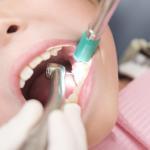Dental care is an essential aspect of a child’s overall health and well-being. Starting dental care early in life is crucial for establishing good oral hygiene habits and preventing dental issues. Children have unique dental needs, and their experience with dentistry can significantly impact their future attitude towards oral health. In this comprehensive guide, we will explore various aspects related to children in dentistry, including the importance of early dental care, common dental issues in children, preventive measures, and tips for a positive dental experience.
Importance of Early Dental Care for Children
Early dental care for children is of utmost importance for several reasons. The first set of teeth, known as primary or baby teeth, plays a significant role in a child’s development. These teeth help in proper chewing, speech development, and the alignment of permanent teeth. Healthy baby teeth are crucial for the eruption and positioning of adult teeth later in life.
Moreover, early dental visits help in identifying any potential dental problems early on, allowing for timely intervention and prevention of more severe issues. By introducing children to dental care from a young age, parents can instill good oral hygiene habits and reduce dental anxiety in the future.
Common Dental Issues in Children
Children can experience various dental issues, and being aware of these problems is essential for timely intervention and management. Some common dental problems in children include:
- Tooth Decay (Cavities)
- Gingivitis and Gum Disease
- Malocclusion (Bad Bite)
- Thumb-Sucking
- Dental Trauma
Tooth Decay (Cavities)
Tooth decay is a prevalent dental issue in children. It occurs when bacteria in the mouth produce acids that erode the tooth enamel, leading to cavities. Factors like poor oral hygiene, sugary diet, and irregular dental check-ups contribute to tooth decay.
Gingivitis and Gum Disease
Gingivitis, an early stage of gum disease, can affect children. It causes inflammation and bleeding of the gums. Proper oral hygiene, including brushing and flossing, can prevent and manage gingivitis.
Malocclusion (Bad Bite)
Malocclusion refers to misalignment of teeth or a bad bite. This can impact a child’s speech, eating habits, and self-esteem. Orthodontic treatments, such as braces, are often used to correct malocclusion.
Thumb-Sucking
Prolonged thumb-sucking or pacifier use can affect the alignment of teeth and the development of the jaw. It’s essential to discourage these habits at an early age to prevent dental issues.
Dental Trauma
Accidents or injuries can cause dental trauma, including chipped, cracked, or knocked-out teeth. Immediate dental care is necessary in such cases to minimize damage and preserve the affected teeth.
Preventive Measures for Children’s Dental Health
Preventive measures are key to maintaining good oral health in children. Parents and caregivers can take several steps to prevent dental issues and ensure their child’s dental well-being:
- Regular Dental Check-ups
- Proper Oral Hygiene
- Balanced Diet
- Fluoride Treatment
- Dental Sealants
- Mouthguards
Regular Dental Check-ups
Schedule regular dental check-ups for your child, starting as early as their first birthday. These visits allow the dentist to monitor the child’s oral health and provide preventive care.
Proper Oral Hygiene
Teach your child to brush their teeth at least twice a day using a fluoride toothpaste. Supervise brushing until the child can do it effectively on their own. Additionally, introduce flossing when teeth start to touch.
Balanced Diet
Encourage a balanced diet rich in fruits, vegetables, dairy products, and lean proteins while limiting sugary snacks and beverages. A healthy diet contributes to strong teeth and gums.
Fluoride Treatment
Consult with your dentist about the need for fluoride treatments. Fluoride helps strengthen tooth enamel and prevent cavities.
Dental Sealants
Consider dental sealants, thin coatings applied to the chewing surfaces of molars, to protect against cavities.
Mouthguards
If your child participates in sports, ensure they wear a mouthguard to protect their teeth from injuries.
Tips for a Positive Dental Experience
Creating a positive dental experience for children is essential to establish a good relationship with oral health care. Here are some tips to make dental visits enjoyable and stress-free for your child:
- Choose a Pediatric Dentist
- Start Early
- Use Positive Reinforcement
- Read Books or Watch Videos
- Stay Calm
- Communicate Openly
Choose a Pediatric Dentist
Pediatric dentists specialize in treating children and are trained to create a child-friendly environment, making the dental experience pleasant for young patients.
Start Early
Introduce your child to the dental office at a young age, even before they need treatment. Let them become familiar with the surroundings and staff.
Use Positive Reinforcement
Praise your child for their bravery and cooperation during dental visits. Offer rewards or small treats as a positive reinforcement.
Read Books or Watch Videos
Read books or show videos about dental visits to familiarize your child with what to expect. This can help reduce anxiety and fear.
Stay Calm
Maintain a calm and reassuring demeanor during the visit. Children often pick up on their parents’ emotions, so staying relaxed can help ease their anxiety.
Communicate Openly
Encourage your child to ask questions and express their concerns. Open communication helps address fears and misconceptions.
Management Strategies for Children in Dental Practice
Ensuring a positive and comfortable experience for children in a dental practice is a priority for both parents and dental healthcare providers. Managing young patients effectively requires a unique approach that involves understanding their specific needs, fears, and anxieties. Implementing successful management strategies tailored to children can lead to improved cooperation, reduced anxiety, and ultimately, better oral health outcomes. In this article, we’ll explore various effective management strategies that can be employed in a dental practice to create a child-friendly environment and promote optimal oral health in young patients.
- Create a Child-Friendly Environment
- Educate and Communicate Clearly
- Engage in Positive Reinforcement
- Distraction Techniques
- Child-Centered Approach
- Empathetic and Patient-Centric Care
- Parent Involvement and Support
- Introduce Step-by-Step Previews
- Minimize Wait Times
- Utilize Behavior Management Techniques
- Utilize Child-Friendly Instruments
- Offer Sedation Options
- Continuous Training and Education
Create a Child-Friendly Environment
Design the dental office with children in mind, incorporating bright colors, playful décor, and child-sized furniture. A welcoming and friendly environment can help children feel at ease and less anxious about their dental visit.
Educate and Communicate Clearly
Explain dental procedures and instruments in a simple and age-appropriate manner to alleviate any fears or misconceptions. Use child-friendly language and visuals to make the child feel more comfortable and informed about what to expect.
Engage in Positive Reinforcement
Offer praise, encouragement, and positive reinforcement during and after dental procedures. Applaud the child for their bravery and cooperation, reinforcing a positive attitude towards dental care.
Distraction Techniques
Use distraction techniques like telling stories, using toys, or showing engaging videos to divert the child’s attention during the dental procedure. Distraction helps reduce anxiety and makes the experience more enjoyable for the child.
Child-Centered Approach
Tailor the dental care approach to suit the child’s personality, preferences, and specific needs. Taking the time to understand each child and adapting the treatment accordingly can build trust and confidence.
Empathetic and Patient-Centric Care
Demonstrate empathy, patience, and understanding towards the child’s feelings and concerns. Acknowledge their fears and anxieties and reassure them throughout the dental visit.
Parent Involvement and Support
Involve parents or caregivers in the dental visit process. Encourage them to provide comfort and assurance to their child, helping to establish a sense of security during the appointment.
Introduce Step-by-Step Previews
Walk the child through each step of the dental procedure in a non-threatening manner. Providing a step-by-step preview can help demystify the process and reduce fear of the unknown.
Minimize Wait Times
Children often have shorter attention spans. Minimize wait times to keep them engaged and prevent restlessness or anxiety while in the waiting area.
Utilize Behavior Management Techniques
Employ behavior management techniques such as tell-show-do, positive reinforcement, and modeling to guide the child’s behavior and cooperation during the dental procedure.
Utilize Child-Friendly Instruments
Use dental instruments that are specifically designed for children, promoting a sense of familiarity and comfort during the dental treatment.
Offer Sedation Options
Consider using sedation or anesthesia techniques when necessary, ensuring a pain-free and anxiety-free experience for children who may require more extensive dental procedures.
Continuous Training and Education
Continuously educate the dental team on child psychology, behavior management, and effective communication strategies. Ongoing training can enhance the skills necessary to manage young patients successfully.
Conclusion
Children’s dental care is a critical component of their overall health and development. Early dental visits, proper oral hygiene, a balanced diet, and a positive dental experience are vital for ensuring good oral health in children. By following preventive measures and creating a supportive environment, parents can help their children develop healthy dental habits that last a lifetime. Regular dental check-ups and early intervention for any dental issues are essential for a bright smile and a healthy future for your child.
Effective management of children in a dental practice involves creating a child-friendly environment, utilizing appropriate communication techniques, employing positive reinforcement, and understanding each child’s unique needs. By implementing these strategies, dental healthcare providers can significantly enhance the dental experience for children, paving the way for a lifetime of good oral health habits. The ultimate goal is to create a positive and enjoyable atmosphere that fosters trust, minimizes anxiety, and encourages regular dental care from an early age.





